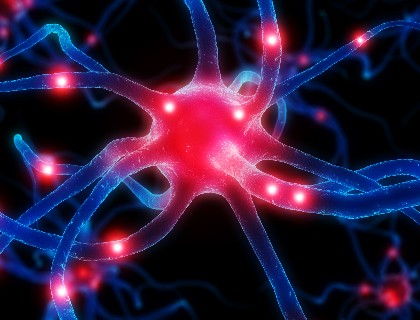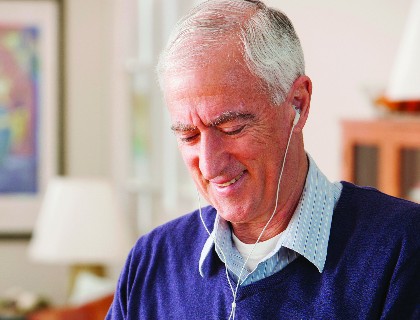Ringing in the Changes
FEATURE - 21ST DECEMBER 2016
Mr Nitesh Patel, consultant otologist at The Tinnitus Clinic, talks teamwork, science and the increasing understanding of this surprisingly common symptom
I am an otologist, which is an ear, nose and throat (ENT) surgeon specialising in ear diseases. My relationship with The Tinnitus Clinic started around five years ago, when the clinic was looking for somebody with a medical background to help assess patients suffering from tinnitus.
It is important to understand that tinnitus is not a disease; it is a symptom that can be caused by several different things. Patients can hear a whole range of perceived sounds: ringing, whistling, buzzing, clicking, crickets, musical notes, machinery. It is surprisingly common, affecting 10-15% of the population. Thirty per cent of the elderly may have tinnitus, but only 10-20% of those will find it troublesome enough for them to present to a doctor. A significant number of sufferers have severe, disabling tinnitus. While for some it is simply an annoyance, others may find it difficult to cope with, leading to feelings of fear, anxiety, and even clinical depression.
There are two categories of tinnitus: primary and secondary. Primary tinnitus can be caused by a deficiency in the auditory input system—the system through which we collect and process external sounds—or by head or neck trauma, which can disrupt the interactions between the sensory and auditory systems. Tinnitus can also be affected by the brain’s limbic system, which is involved with the development and control of emotions. Things like stress and anxiety can cause or increase the levels of tinnitus—psychological treatment like cognitive behavioural therapy (CBT) is effective in reducing those symptoms, by teaching the patient to restructure their thoughts about tinnitus, and avoid a negative emotional spiral.

A neuroscientific approach to tinnitus

Desyncra (TM) for Tinnitus Sustainably reduces the loudness and annoyance of your tinnitus sounds
Secondary tinnitus is caused by a separate, clearly identifiable disorder that disrupts the auditory input system. This could be something as simple as a build-up of ear wax, or one of a series of middle ear diseases. A more serious—and thankfully rare—cause of secondary tinnitus is a tumour. This is where my position at the clinic comes in: to check for any medical problems that may be responsible for the symptom. My role is to assess patients by taking a thorough medical history and conducting physical examinations. I will then try to decide if their tinnitus is primary or secondary.
When talking about tinnitus, it helps to understand a little about how the auditory system works. The external ear collects sound vibrations and funnels them into the inner ear, where that vibrational energy is converted into nerve signals. These travel along the nerves to the central auditory system (CAS), which is responsible for the complex task of turning those signals into what we perceive as sound.
In some cases, hearing loss is caused by a reduced input from the peripheral auditory system (the outer ear), which can lead to secondary changes in the CAS. With tinnitus, this takes the form of hyperactivity in the CAS, leading to the generation of random nerve signals.
These are treated as if they were signals supplied by the outer ear, resulting in what the tinnitus sufferer ‘hears’ as sound. There are areas of the brain whose job it is to prevent such unwanted auditory signals breaking through the higher consciousness areas, and if they are working well, these filter out the extra signals. In some situations, however, this filtering mechanism—the ‘gating system’, as we call it—does not work properly, resulting in tinnitus.
There is a lot of work being undertaken to explore how our neurological networks work, and investigations into why there might be over-activity in some and under-activity in others, as well as how the auditory and non-auditory networks of the brain interact. Several teams are studying this gating function to see if they can discover what can disrupt it, causing it not to gate the tinnitus signals properly. Many forms of tinnitus can be considered neural network disorders, so understanding the interactions of these neural networks could well provide more effective ways of helping patients in the future.
One current idea is to use targeted sound therapies to try to alter activity within certain parts of the CAS. This has only been around for about five years, but it is a seminal idea which has already led to the emergence of a variety of treatment methodologies that show real promise. In this clinic, we use one which is less than a year old, so it is a very cutting-edge treatment. It is used as part of current best practice, which denotes a combination of psychological and audiological treatment, which hugely increases the chances of producing meaningful change.
While it is important to say that there is no ‘cure’ for tinnitus, there are some very effective treatment options available—and in the case of secondary tinnitus caused by a curable medical condition, we might be able to stop it altogether.
For the most part, we are talking about management therapy, but this can be hugely effective in making real improvements to people’s lives, which is why clinics like this are so important. In a multi-disciplinary approach, otologists work alongside audiologists and CBT therapists, which is one of the things I like most about The Tinnitus Clinic—I like being part of a team, working closely together to get the best results for the patients. The days of being told to “go away and live with it” should be behind us now. Unfortunately, there are not enough places like this clinic out there, so there is still a long way to go.
For more information, visit The Tinnitus Clinic